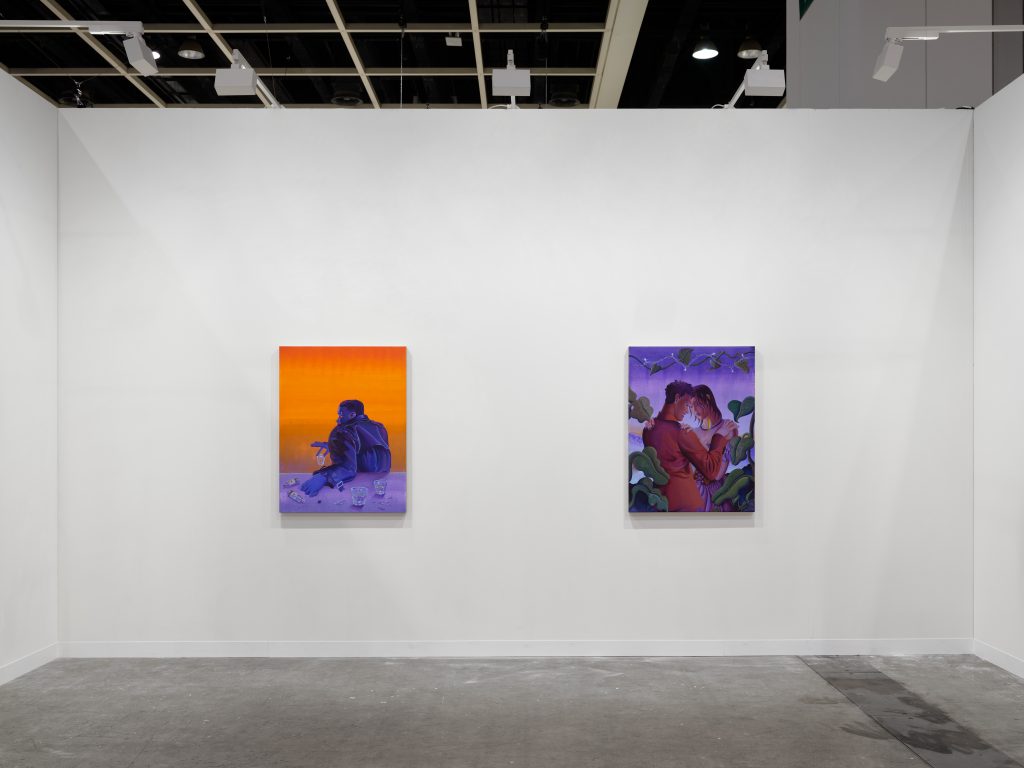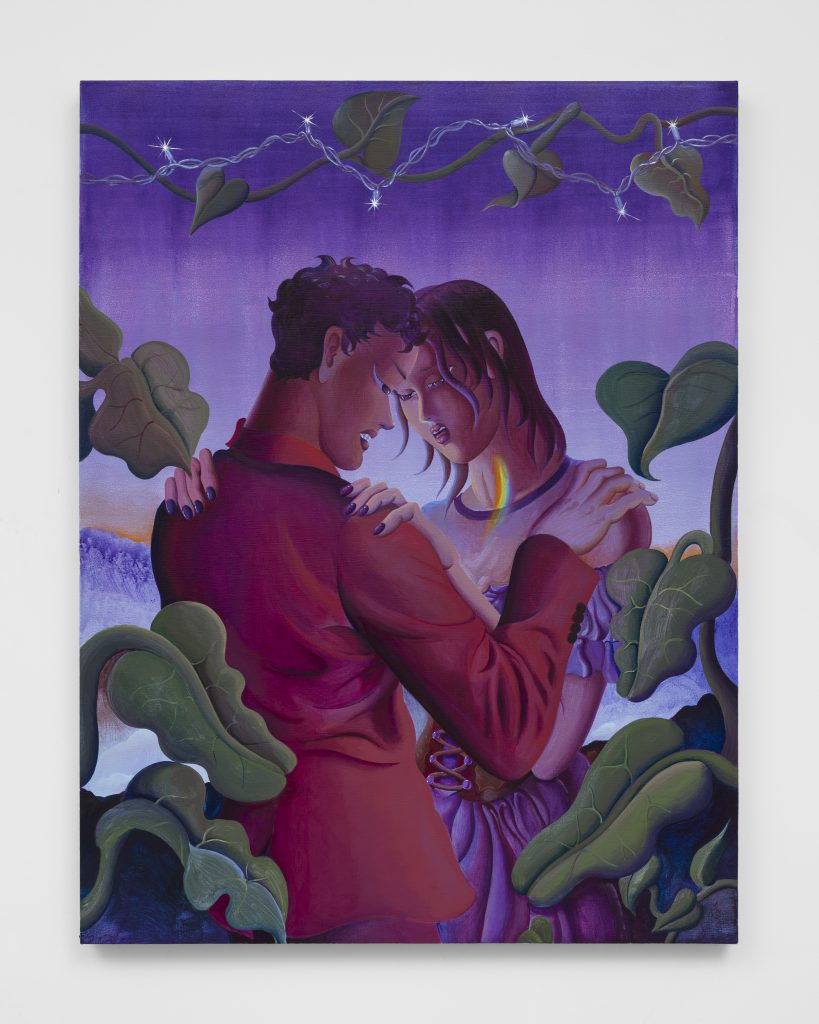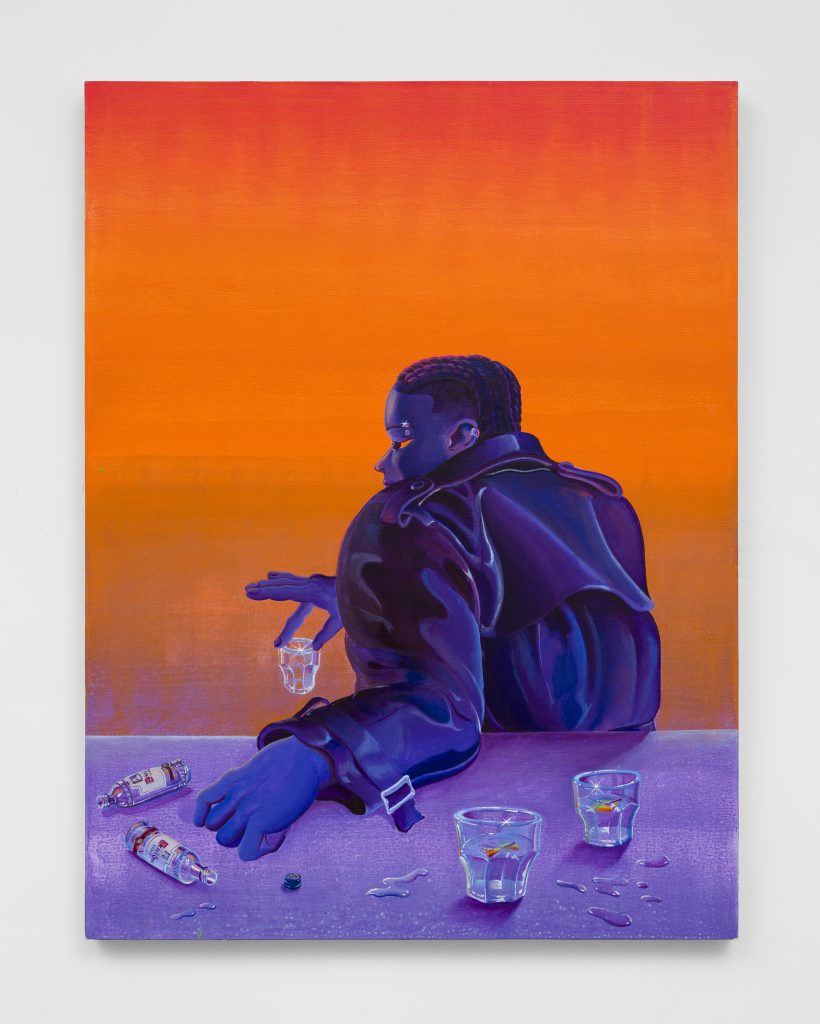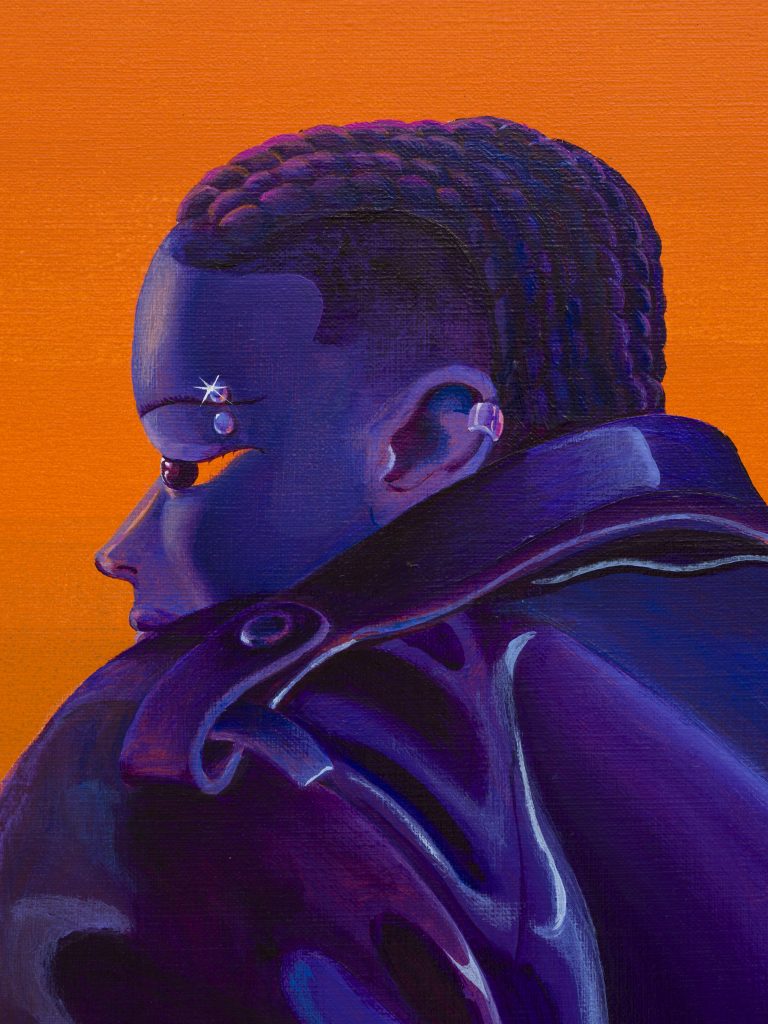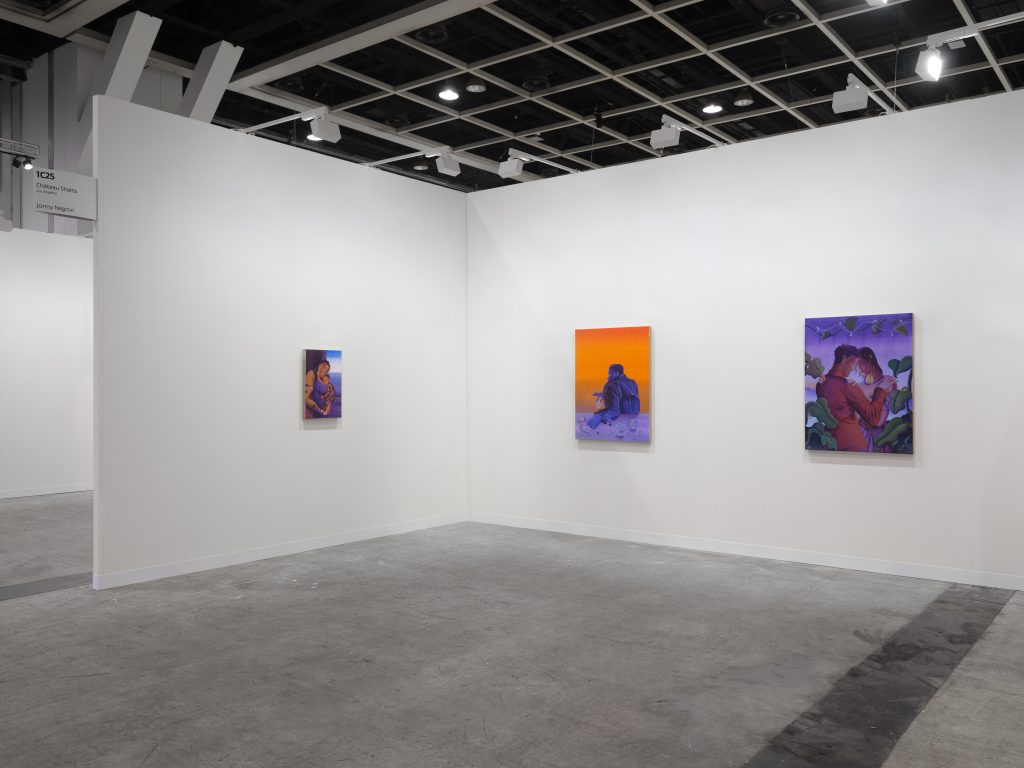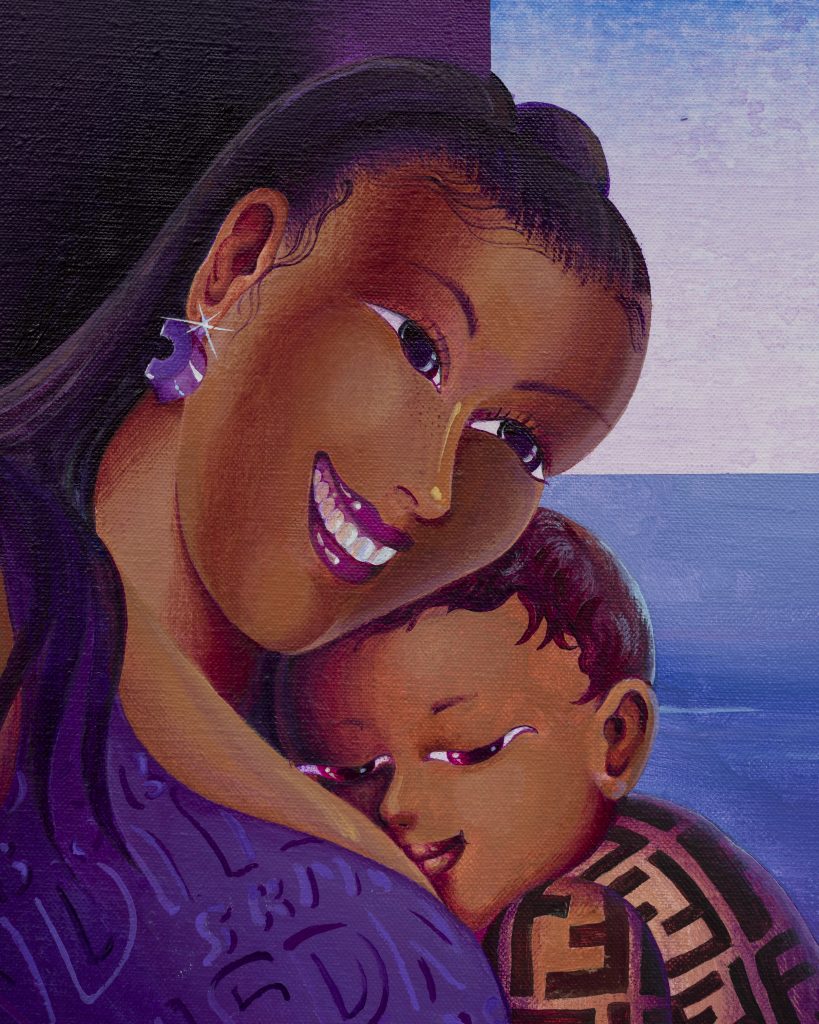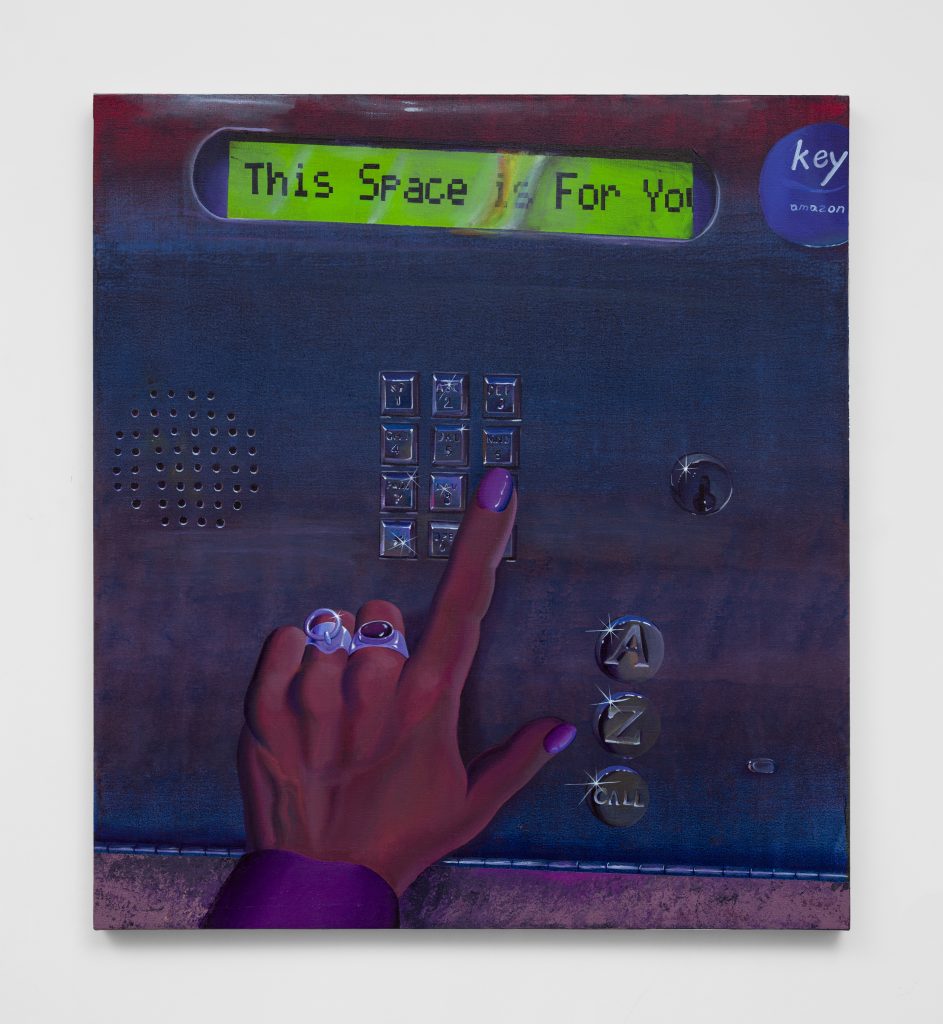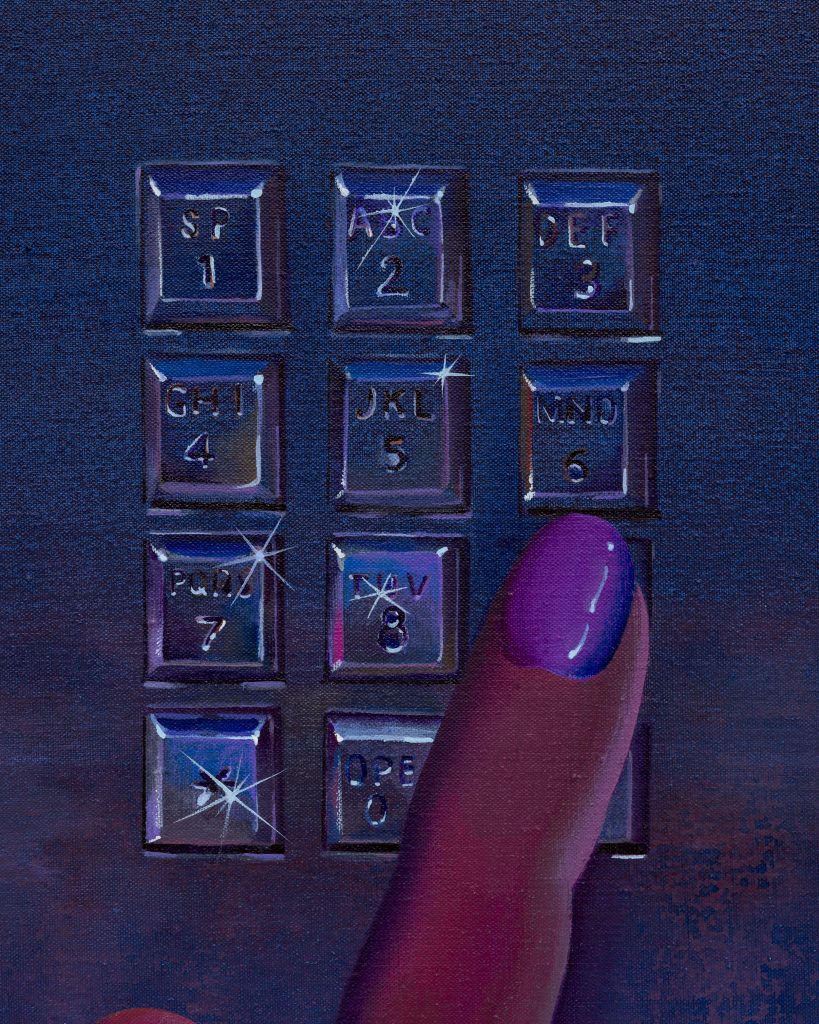Light Nights
by Dan Nadel
Jonny Negron might be a California Light and Space artist. Just import the ecstatic, quasi-religious experiences and liminal chronology of those material magicians to the packed clubs of Los Angeles somewhere between two and five in the morning, and there’s Negron, off in a corner capturing it all. In fact, the only way to transmit the primal scrum and ecstasy of that time and those places is through the endless hues soaked into Negron’s canvases. If it’s an unlikely subject, the artist found it as he’s found all his fixations –through ample experience and an unabated wanderlust.
Negron was born in Puerto Rico; his family moved to Long Island when he was two. Obsessed with drawing as a kid, he has imbibed everything from video games like Double Dragon, comic books such as The Uncanny X-Men, Spawn, Blade of the Immortal, Dragon Ball Z, and Akira and beacons of his mature work: Mark Rothko, Robert Crumb and Yuichi Yokoyama. Negron bounced around a bit after high school – a brief stint in community college, then between Austin, Oakland, Brooklyn, and these days Los Angeles. Negron first found an audience around 2010 on two parallel lines: short comics composed as though stills composed by video game heroes circa 2068; and voluptuous pin-ups lovingly rendered with tender attention to body positivity, individualized fashion, and spaces that felt welcoming and mellow. At the time our man was using Micron pens and India ink, with Pigma color markers or watercolors for his colors. It was, and remains, a unique expression of both our digital and sexual worlds. And I say “our” because Negron was precisely not Robert Crumb – he wasn’t rendering fetishes (though both share a love of zaftig women) so much as rendering color forms in space.It’s less compulsion and more about the way Negron makes it feels on the page.
Negron’s progressive vision of women was in stark contrast to the strung out sleaze aesthetic then popular in the pages of Vice and endless American Apparel ads sliced through the American land and digi-scape. This was in the primetime of Tumblr, when images were flying around the internet with a frenzy that united past and present visual cultures to produce a synthetic future. The platform surfaced artists, like Negron, who were otherwise far away from art centers and often uncategorizable. It also provided millions of kids with modes of dress and self-presentation that allowed them to better express their interior sense of selves. What was once an entirely virtual mode of being — of isolated individuals uploading images to a collective space and constructing both themselves and the zeitgeist – has now manifested in daily life. Tumblr may be an artifact, but the people it produced walk among us. Negron helped create them, and now he’s the gently swaying anthropologist wryly observing them.
In both lines of inquiry and the public dissemination of his images, Negron was ambitious for, and specific about his work. These days, what were once intimate sheets of paper are amply sized canvases painted with several washes of diluted acrylics. If the earlier drawings were snapshots, his recent paintings are carefully composed, eerily elegiac memorials to present tense space and time. They all occur in a space saturated with unnatural red, blue, and purple light, as though emitted from infinite LEDs, the cold glow of screens, and reflections of both on floors, ceilings, and minds coated with avalanches of chemical snow. Purple, the Dionysian color of decadence, is dominant. In that violet space, revelers unite to experience body and soul as one, not unlike, as many have noted, a religious gathering. In the midst of the party, cosmic beings visit as easily as corporeal dancers. Some humans, however, lose themselves, as in Dying on the Vine, in which a man, perhaps having stumbled into the club from a long day at the office, goes down on his hands and knees, grimacing and suddenly blank. His green suit signifies his return to his lower nature, and the women around him, raised on high by their exquisite fashion, look on in amusement.
Negron remains interested in narrative, though is careful to avoid didacticism and literal readings, which is to say, the sensual pleasure of these paintings is in the unhinged plunge into his color spaces – as sure an atmosphere as a Robert Irwin installation. They want to be bathed in. That said, the narratives aren’t nothing. They start with the set-ups – doing poppers, striking a pose, having a drink – but open up in the details, which are often informed by external systems and symbols that invite readings. For paintings like Losing my taste for the night life and Lover’s Rock, Negron used the Rider Waite Tarot Card Deck, devised in part by the scholar and mystic A.E. Waite but brought to fruition and rendered as narrative allegories by the brilliant artist and student of the occult Pamela Colman Smith and published in 1909. For Negron, as Smith, the idea, of say, the “Lovers” gemini-ed and eternal, can birth numerous visual interpretations – in Negron’s case a pair of lithe bodies encircled in an Edenic universe with a garland of distinctly L.A. barbed wire. The “Five of Cups” card indicates a loss of hope, expectations perhaps wiped out. Three cups are spilled and two stand safely. This is the end of something, but hope is not extinguished. This is the basis of the aptly titled, Losing my taste… the hunched partier, bathed in iridescent purple looks into an uncertain orange future.
Last call might cut to Send it up, a self-portrait of sorts using the intercom system at Negron’s apartment building. The artist’s hand, adorned with jewelry and drenched in color, is posed with his index finger extended, like an ancient Christian, a nod to “hope of heaven” but here just trying to get home and get the hell to bed. The generous words, “This Space is For You” (for who? “you, you, and you?” Or me, too? It might not quite be the end of the night) scroll across – of course if the scroll continued we would realize it’s “This Space is For Your Number” so that the tired and/or inebriated could enter their code and ascend unto bed. There, waiting by the bed might be an image like Mama — the past/present/future image. Here, though, Negron was thinking about our contemporary Madonna — Kim Kardashian, whose anointed motherhood is never without sponsorship. And so here the holy mother and son are wholly owned, if no less beautiful. And with that, to bed. That’s the beauty of this Jonny Negron in this year of 2022. He is unafraid, perhaps even thrilled to create and light up a world of the sacred and profane, from dusk to dawn, awake and dreaming in the Los Angeles night.


